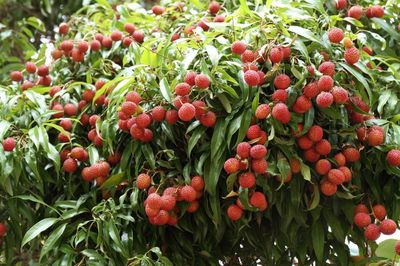Similarly, traditional growers believe no fruit should be removed from the tree until harvest, when all fruit is removed at once. However, there are strong indications that lychee fruit thinning encourages larger, healthier fruit and prevents overloaded branches from breaking. Read on to learn more about thinning lychee trees.
Tips on Thinning Lychee Trees
Thin the canopy to increase sunlight, as lychee trees won’t bear fruit without adequate sunlight. Thinning also improves air circulation in the center of the tree and protects the tree from wind damage. Spring is the best time for thinning lychee trees. Thin no more than 20 percent of branches from the inner part of the tree, removing just enough growth that you can see sunlight through the canopy. Be sure to remove any branches that rub or cross other branches. Don’t just “top” the lychee tree, which results in an unsightly, unhealthy tree. Remove entire branches, beginning with the longest branches first.
How to Thin Lychee Fruits
Lychee fruits grow in bunches, somewhat akin to mulberries. Thinning the fruit discourages overbearing and improves the size, quality, and color of lychee fruit. The best time to thin lychee fruit is in the earliest stages of fruit development, soon after pollination takes place. Remove small lychee fruit with your fingers or a pair of sharp pruners. Be sure to remove any small, damaged, or misshapen fruit as soon as it appears. Whether or not gardeners agree on thinning of lychee tree fruit, this does help improve overall fruit growth. That said, it is up to each individual grower to decide if thinning is necessary.
